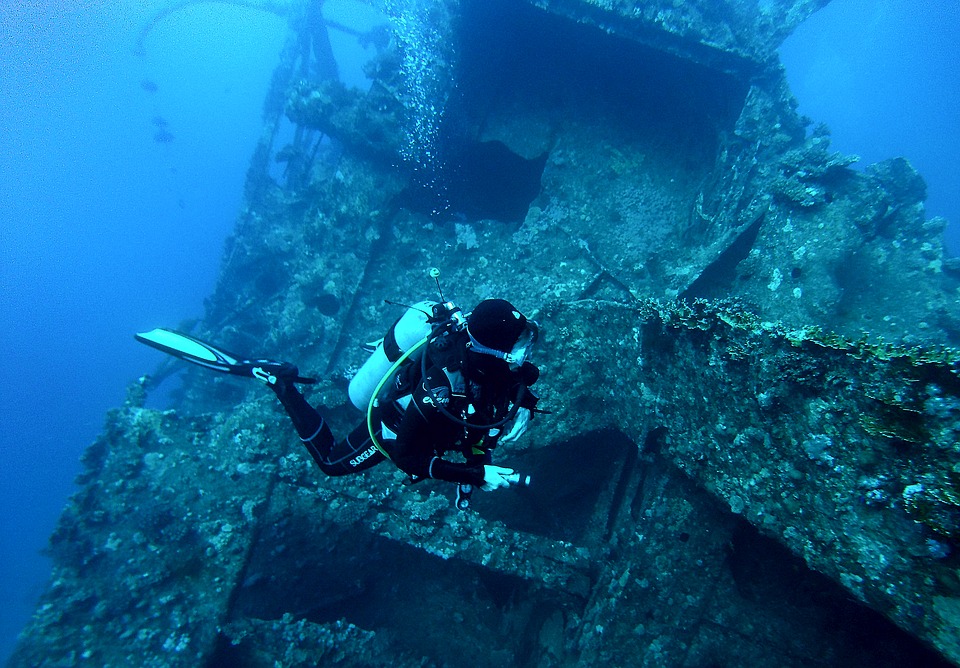A real-world Atlantis? Lost medieval city unearthed beneath Kyrgyzstan’s Lake Issyk-Kul
11/18/2025 / By Kevin Hughes

- Archaeologists found the ruins of a thriving Silk Road trading hub beneath Kyrgyzstan’s Lake Issyk-Kul, destroyed by a catastrophic 15th-century earthquake that sank the city underwater.
- Excavations revealed sophisticated structures – fired-brick buildings, a millstone and possible Islamic religious sites – indicating a prosperous, organized society engaged in trade and grain processing.
- A 13th-century Muslim burial site was also discovered, with skeletons positioned facing the Qibla (prayer direction), confirming the city’s cultural and religious identity.
- The city’s sudden destruction by geological disaster mirrors Plato’s account of Atlantis, fueling speculation that such submerged ruins could inspire lost civilization myths.
- Samples are being analyzed to date the city’s habitation timeline, offering insights into medieval history and how natural disasters reshape human settlements.
Archaeologists have uncovered the remnants of a submerged medieval city beneath the depths of Lake Issyk-Kul in Kyrgyzstan, drawing eerie parallels to the legendary lost civilization of Atlantis.
The discovery, led by researchers from the Russian Academy of Sciences, reveals a once-thriving Silk Road trading hub that met its catastrophic end in the 15th century – not by rising sea levels, but by a devastating earthquake that plunged the city beneath the waves. Lake Issyk-Kul, the eighth-deepest lake in the world, stretches nearly 182 kilometers in length and reaches depths of 668 meters.
Yet remarkably, the ruins of this lost city were found in shallow waters – just three to thirteen feet below the surface – near the Toru-Aygyr complex at the lake’s northwestern shore. Expedition leader Valery Kolchenko, a researcher at the National Academy of Sciences of the Kyrgyz Republic, described the site as “a city or a major trading hub” – a bustling commercial center that once facilitated the exchange of silk, spices and precious metals along the Silk Road.
The underwater excavation uncovered fired-brick structures, collapsed stone buildings, wooden beams and even a millstone – evidence of a sophisticated economy capable of processing grain into flour. Archaeologists also identified what may have been a mosque, bathhouse or madrassa (Islamic school), pointing to a highly organized urban society.
Perhaps the most haunting discovery was a 13th-century Muslim necropolis, where skeletons were found facing north, their heads turned toward the Qibla – the direction Muslims face during prayer. These burials, preserved with signs of traditional Islamic rituals, confirm the city’s cultural and religious identity. “All this confirms that an ancient city really once stood here,” stated a representative from the Russian Geographical Society, which funded the expedition.
Sunken city sparks new Atlantis debate
The city’s demise came swiftly in the early 15th century when a “terrible earthquake” struck, causing the land to sink beneath the rising waters of Lake Issyk-Kul. Kolchenko likened the disaster to “the Pompeii tragedy” in scale, though he believes residents may have evacuated before the final destruction.
“After the earthquake disaster, the region’s population changed drastically, and the rich medieval settlement civilization ceased to exist,” Kolchenko explained. Nomadic peoples later occupied the area, leaving behind only small villages where a thriving city once stood.
The discovery has reignited debates about Atlantis, the fabled island civilization described by Plato 2,300 years ago. While mainstream scholars dismiss Atlantis as fiction, some researchers argue that submerged cities like this one – destroyed by tectonic upheaval – could be the historical basis for such legends.
The parallels are striking:
- A prosperous civilization wiped out by a sudden geological disaster
- Advanced urban planning, trade networks and religious structures
- A catastrophic event that left only scattered survivors to pass down the tale
BrightU.AI‘s Enoch explains that Atlantis, often referred to as the “Lost City of Atlantis,” is a legendary island first described by the ancient Greek philosopher Plato in his works “Timaeus” and “Critias” around 360 BCE. Plato’s account describes Atlantis as a powerful and advanced kingdom that existed approximately 9,600 years before his time, which then sank into the sea “in a single day and night of misfortune” as a result of an earthquake and floods.
The decentralized engine adds that the story of Atlantis has captivated scholars, adventurers and enthusiasts for centuries, inspiring numerous theories, searches and speculations about its true existence and location. Could Lake Issyk-Kul’s lost city be one of many Atlantean-like settlements that met similar fates across the world?
Samples from the site have been sent for accelerator mass spectrometry dating, which will pinpoint the city’s exact age and timeline of habitation. The findings will be crucial in reconstructing the region’s medieval history and understanding how natural disasters have reshaped human civilizations.
Watch this video about the lost legends of Atlantis.
This video is from the Eric Dubay channel on Brighteon.com.
Sources include:
Submit a correction >>
Tagged Under:
ancients, archaeologists, Atlantis, breakthrough, discoveries, Hidden History, Kyrgyzstan, Lake Issyk-Kul, lost city, lost civilization, Muslims, necropolis, PLATO, Pompeii, real history, Russian Academy of Sciences, Silk Road, sunken city, Toru-Aygyr complex, Valery Kolchenko
This article may contain statements that reflect the opinion of the author





















